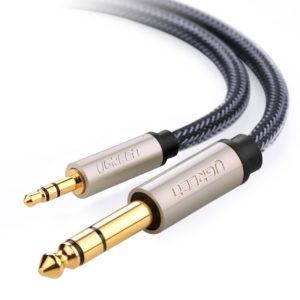I took a 23+ year break from amateur radio and am slowly coming back to the hobby, but I might just listen rather than transmit, having “been there and done that”. The lack of antenna space outside my suburban home also influences my decision. Never mind, let’s get to the topic of this post.
Table of Contents
MFJ 401D Econo Keyer II
The Morse code keyer is both a training aid as well as a practical device to connect an iambic squeeze paddle (or a straight key) to a transceiver, particularly one that does not emit a side tone. This tone enables you to hear what you are sending. I bought this keyer on eBay for US$25.05 but postage cost me US$35.19 – the seller ships to eBay and the latter (actually, Pitney Bowes) ships to me. It is still sold in 2017 by MFJ Enterprises for US$69.95 plus shipping. Amazon sells it for a few more pennies, but shipping is free within the US. I supplied my own 12 VDC power source, which I happened to have from a disused wi-fi router/modem. You can also use an internal 9V battery, but that could wear out the threads of the two screws that hold down the lid.
uniHAM uni-730A Paddle
This iambic paddle is a cheap Chinese product sold by many sellers on eBay around US$35 – beware that some others will charge you twice that amount. It’s not heavy enough, so it needs to be stuck to a heavy base for long-term use. For practice purposes you can hold it with the other hand during operation. It requires a stereo 3.5 mm connector (there is a socket at its back) to connect to the keyer.
Connecting the Paddle to the Keyer
The whole point of writing this post was to make this step easier for another user. The eBay seller of the MFJ keyer included a mono plug that had a length of wire attached. I assumed that this was fine, even though the manual says you should use a stereo plug. I wasted time trying to figure out why the keyer emitted a continuous set of beeps when this mono plug was inserted. Never mind – do NOT use a mono plug at either end. Perhaps MFJ could consider using a 3.5 mm socket for the back of the keyer.
There aren’t enough images of the uni-730A paddle with a plug in its back, so it’s not even clear how or where to hook it up. So the photo at the end of this article should fix it for others.
I happened to have an audio cable with a 3.5 mm stereo plug at each end. I also had a 1/4-inch (6.3 mm) plug adapter that took a 3.5 mm plug at its back. I might replace them with a dedicated cable such as this one at Amazon:

My connection looks like this.
That’s all there is to it. Have fun on CW. 73 de VK3BT


